Take the radius of the Earth to be 6,378 km. (a) What is the angular speed (in rad/s) of a point on Earth's surface at latitude 31° N? 0.0000727 rad/s (b) What is the linear speed (in m/s) of a point on Earth's surface at latitude 31° N? 397.45 m/s (c) At what latitude would your linear speed be 32 m/s? (Enter your answer in degrees north of the equator.) 76.52 |× °N
Take the radius of the Earth to be 6,378 km. (a) What is the angular speed (in rad/s) of a point on Earth's surface at latitude 31° N? 0.0000727 rad/s (b) What is the linear speed (in m/s) of a point on Earth's surface at latitude 31° N? 397.45 m/s (c) At what latitude would your linear speed be 32 m/s? (Enter your answer in degrees north of the equator.) 76.52 |× °N
University Physics Volume 1
18th Edition
ISBN:9781938168277
Author:William Moebs, Samuel J. Ling, Jeff Sanny
Publisher:William Moebs, Samuel J. Ling, Jeff Sanny
Chapter10: Fixed-axis Rotation
Section: Chapter Questions
Problem 50P: What is (a) the angular speed and (b) the linear speed of a point on Earth’s surface at latitude 30N...
Related questions
Question
100%

Transcribed Image Text:Take the radius of the Earth to be 6,378 km.
(a) What is the angular speed (in rad/s) of a point on Earth's surface at latitude 31° N?
0.0000727
rad/s
(b) What is the linear speed (in m/s) of a point on Earth's surface at latitude 31° N?
397.45
m/s
(c) At what latitude would your linear speed be 32 m/s? (Enter your answer in degrees north of the equator.)
76.52
|× °N
Expert Solution
This question has been solved!
Explore an expertly crafted, step-by-step solution for a thorough understanding of key concepts.
This is a popular solution!
Trending now
This is a popular solution!
Step by step
Solved in 3 steps with 3 images

Knowledge Booster
Learn more about
Need a deep-dive on the concept behind this application? Look no further. Learn more about this topic, physics and related others by exploring similar questions and additional content below.Recommended textbooks for you
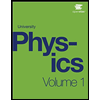
University Physics Volume 1
Physics
ISBN:
9781938168277
Author:
William Moebs, Samuel J. Ling, Jeff Sanny
Publisher:
OpenStax - Rice University
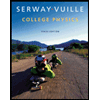
College Physics
Physics
ISBN:
9781285737027
Author:
Raymond A. Serway, Chris Vuille
Publisher:
Cengage Learning
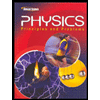
Glencoe Physics: Principles and Problems, Student…
Physics
ISBN:
9780078807213
Author:
Paul W. Zitzewitz
Publisher:
Glencoe/McGraw-Hill

University Physics Volume 1
Physics
ISBN:
9781938168277
Author:
William Moebs, Samuel J. Ling, Jeff Sanny
Publisher:
OpenStax - Rice University

College Physics
Physics
ISBN:
9781285737027
Author:
Raymond A. Serway, Chris Vuille
Publisher:
Cengage Learning

Glencoe Physics: Principles and Problems, Student…
Physics
ISBN:
9780078807213
Author:
Paul W. Zitzewitz
Publisher:
Glencoe/McGraw-Hill
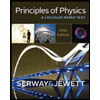
Principles of Physics: A Calculus-Based Text
Physics
ISBN:
9781133104261
Author:
Raymond A. Serway, John W. Jewett
Publisher:
Cengage Learning
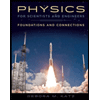
Physics for Scientists and Engineers: Foundations…
Physics
ISBN:
9781133939146
Author:
Katz, Debora M.
Publisher:
Cengage Learning

Physics for Scientists and Engineers, Technology …
Physics
ISBN:
9781305116399
Author:
Raymond A. Serway, John W. Jewett
Publisher:
Cengage Learning